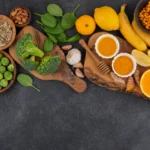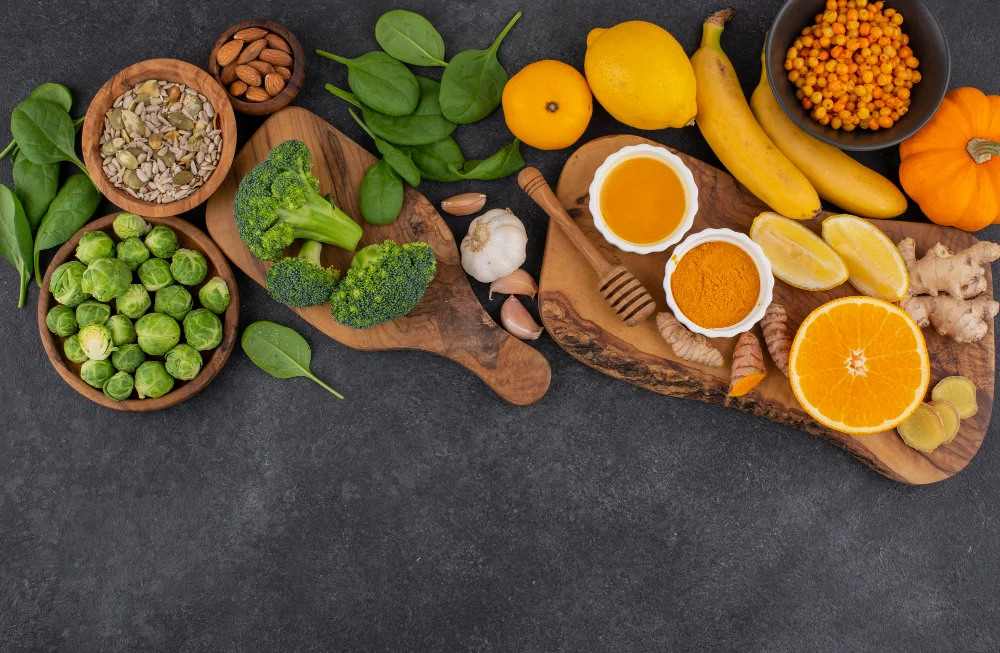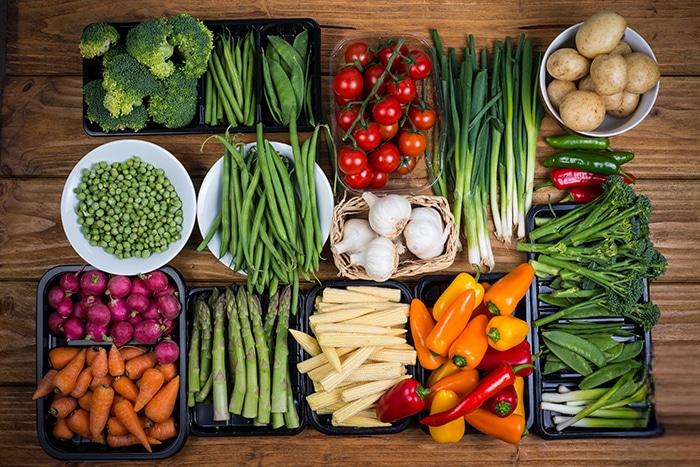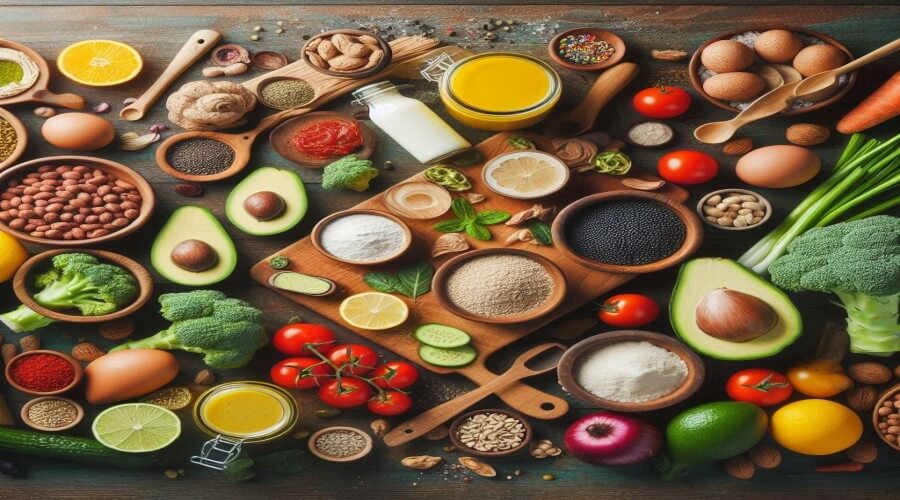Weeknights often demand meals that are fast, flavorful, and fulfilling. Enter the stir-fry: a cooking method renowned for its speed, versatility, and ability to transform simple ingredients into vibrant dishes. Vegan stir-fries, in particular, shine as a fantastic way to load up on fresh vegetables and plant-based proteins. Forget complicated recipes or greasy takeout quick vegan stir-fry recipes made at home put you in control. This guide explores the art and science of crafting delicious weeknight vegan stir-fries, viewed through the lenses of nutrition, ethics, environment, and practical techniques, offering inspiration and adaptable ideas perfect for kitchens in Jaipur and beyond, using readily available ingredients.
LENS 1: Nutritional Analysis (Fast & Fresh Fuel)

Beyond speed, vegan stir-fries can be nutritional champions when composed thoughtfully.
- Vegetable Extravaganza: Stir-frying is arguably one of the best ways to incorporate a wide array of colourful vegetables into a single meal, maximizing intake of diverse vitamins, minerals, antioxidants, and dietary fiber. Think bell peppers (shimla mirch), onions (pyaz), carrots (gajar), cabbage (patta gobhi), green beans, broccoli, mushrooms, baby corn, snow peas, bok choy, and leafy greens like spinach (palak) added at the end. Prioritize using seasonal vegetables available in Jaipur markets (currently, in hot pre-monsoon May, this might include onions, peppers, tomatoes, cluster beans/guar phali, okra/bhindi, various gourds – use firmer ones cut small).
- Lean Plant Protein: Easily add satisfying protein with cubed/sliced firm or extra-firm tofu (pressed well!), tempeh strips, shelled edamame, chickpeas (chana), peanuts (moongphali), cashews (kaju), or even pre-cooked beans or lentils tossed in near the end.
- Healthy Fats in Moderation: Stir-frying requires less oil than deep-frying. Use oils with a high smoke point (like groundnut/peanut oil, sunflower oil, rapeseed/canola oil). Healthy fats can also come from added nuts, seeds (sesame/til), or a finishing drizzle of toasted sesame oil.
- Complex Carbohydrate Pairing: Serve stir-fries over brown rice, quinoa, millet (like bajra or foxtail millet), or whole wheat noodles for sustained energy and extra fiber, creating a complete meal.
- Nutrient Retention: The quick cooking time at high heat can help retain certain heat-sensitive, water-soluble nutrients (like Vitamin C) better than prolonged boiling, as vegetables remain crisp-tender. However, some losses are still inevitable with any cooking method.
- Sodium Control: Making your own stir-fry sauce allows complete control over sodium levels, often significantly lower than bottled sauces or restaurant versions. Remember, B12 supplementation is essential for a balanced vegan diet. What colourful seasonal vegetables available locally can you add to your next stir-fry to boost its nutritional variety?
Nutritional Deep Dive: Maximizing Vegetable Variety & Nutrients in Stir-Fries
Aim for a rainbow of colours in your stir-fry! Different colours often indicate different phytonutrients and antioxidants:
- Red/Orange (Peppers, Carrots, Tomatoes): Rich in carotenoids (like beta-carotene, lycopene) and Vitamin C.
- Green (Broccoli, Beans, Spinach, Peppers, Zucchini, Gourds): Provide Vitamin K, folate, potassium, Vitamin C, and various antioxidants.
- Purple/Blue (Purple Cabbage, Eggplant – use sparingly): Contain anthocyanins (powerful antioxidants).
- White/Tan (Onions, Garlic, Mushrooms, Cauliflower): Offer allicin (in garlic/onion), selenium (mushrooms), and other beneficial compounds. Quickly stir-frying helps retain the vibrant colour and crisp texture, which often correlates with better retention of certain heat-sensitive nutrients. Adding leafy greens right at the end just to wilt minimizes nutrient loss.
Voice of Experience (Public Health Nutritionist): “Vegan stir-fries are an excellent vehicle for increasing vegetable intake – a cornerstone of healthy eating. They combine fiber, vitamins, minerals, and antioxidants with lean plant protein options like tofu or beans. Cooking quickly helps retain nutrients, and making your own sauce keeps sodium in check. It’s a perfect healthy and fast weeknight meal strategy.” – Dr. Ananya Sharma, MPH
LENS 2: Ethical Framework (Conscious Convenience)

Choosing to make a quick vegan stir-fry at home carries ethical weight beyond just the ingredients.
- Homemade vs. Takeout: Opting for a homemade stir-fry over typical fast-food or takeout often means choosing a healthier, less wasteful (less packaging), and potentially more ethically sourced meal (depending on takeout source vs. home ingredients). It provides control and transparency.
- Ethical Sourcing: Even in a quick meal, conscious choices matter. Select Fair Trade certified soy sauce/tamari or other condiments if possible. Prioritize buying local, seasonal vegetables from Jaipur’s markets to support local farmers and reduce food miles. Choose ethically sourced tofu brands where information is available.
- Fighting Food Waste: Stir-fries are brilliant for using up odds and ends of vegetables lingering in the fridge – slightly soft peppers, half an onion, remaining carrots, wilting greens. This aligns perfectly with the ethical imperative to reduce food waste.
- Value of Time & Well-being: The speed and convenience of stir-frying allow busy individuals to prepare a nourishing, compassionate meal quickly, freeing up valuable time for family, rest, or other pursuits, which contributes to overall well-being – an ethical consideration of personal resource management.
- Accessible Advocacy: A delicious, quick, colourful vegan stir-fry is an easy and appealing dish to share with others, demonstrating how simple and satisfying plant-based eating can be without being preachy. How does making a quick, healthy stir-fry at home align with your values compared to ordering takeout?
Hidden Benefits: Culinary Empowerment
Mastering the simple techniques of stir-frying provides a sense of culinary competence and self-sufficiency, empowering individuals to create fast, healthy, and ethical meals whenever needed.
Voice of Experience (Sustainable Food Blogger): “A weeknight vegan stir-fry is ethical convenience at its best. You control the ingredients, support local farmers by using seasonal veg, drastically cut down on takeout packaging waste, and use up leftovers efficiently. It proves that fast food can be fresh, compassionate, and sustainable.” – @JaipurVeganLife (hypothetical blogger)
Critical Reassessment: Mindful Speed
While speed is a benefit, ensure it doesn’t lead to mindless consumption or completely overlooking ingredient origins. Even quick meals benefit from a moment of appreciation and awareness of where the food came from. Balance convenience with consciousness.
LENS 3: Ingredient Science & Environment (Sustainable Sizzle)

The effectiveness of stir-frying relies on basic scientific principles, and its typical ingredients boast strong environmental credentials.
- The Science of the Sizzle: Stir-frying utilizes high heat and conduction (from the pan) with a small amount of oil. The constant motion (stirring/tossing) ensures quick, relatively even cooking. High heat promotes:
- Maillard Reaction & Caramelization: Browning on vegetables and protein (like tofu) creates complex savoury and sweet flavours.
- Texture: Rapid cooking helps vegetables retain some crispness (al dente) by quickly deactivating enzymes that cause softening, while still cooking them through.
- Wok Hei (Ideal): In traditional wok cooking over high flame, vaporized oils and food particles combust, creating a unique smoky aroma – harder to achieve fully on home stoves but the principle of high heat and quick cooking applies.
- Environmental Advantages:
- Plant-Centric Footprint: Stir-fries heavily feature vegetables and plant proteins (tofu, beans, nuts), which have significantly lower land use, water use, and greenhouse gas emissions compared to meat-based stir-fries (chicken, beef, pork).
- Seasonal & Local Focus: Utilizing vegetables in season locally (like peppers, onions, beans, gourds currently available around Jaipur) minimizes transportation emissions and supports regional agriculture.
- Energy Efficiency: While requiring high heat, the short cooking time on a single burner makes stir-frying relatively energy-efficient compared to longer oven cooking or extensive stovetop simmering. A quick gas or induction stir-fry is generally quite efficient.
- Water Use: Primarily involves washing vegetables and cooking accompanying rice/noodles. The stir-fry process itself uses minimal added water. How does choosing a vegetable and tofu stir-fry over a meat-based one contribute to a lower environmental impact?
Market Transformation Map Suggestion: Data showing increasing consumer purchases of tofu and pre-cut stir-fry vegetable mixes, alongside sales data for woks/kadais and bottled stir-fry sauces.
Voice of Experience (Chef & Food Scientist): “Proper stir-frying is about managing high heat effectively. You want intense heat to sear quickly, developing flavour via the Maillard reaction while keeping vegetables crisp-tender. Constant motion prevents burning. Using minimal oil and leveraging the natural moisture released from vegetables is key to the technique.” – Chef Anil Kumar, Culinary Institute
LENS 4: Everyday Practitioner’s Experience (Recipes, Prep & Technique)

Success with quick vegan stir-fry recipes hinges on preparation and technique.
Essential Stir-Fry Technique:
- Mise en Place (Prep EVERYTHING First): This is non-negotiable for fast stir-frying. Chop all vegetables, mince garlic/ginger, prepare protein (press/cube tofu), measure liquids, and mix your sauce before you turn on the heat.
- High Heat & Right Oil: Get your wok or large, heavy-bottomed kadai/skillet very hot over medium-high to high heat. Add 1-2 tablespoons of high-smoke-point oil (groundnut, sunflower, canola, rice bran).
- Aromatics: Add ginger and garlic (and chili if using) and stir-fry very quickly (15-30 seconds) until fragrant – don’t let them burn.
- Hard Veggies First: Add vegetables that take longer to cook (carrots, broccoli stems, firm beans, cauliflower florets). Stir-fry for a few minutes.
- Softer Veggies Next: Add quicker-cooking vegetables (bell peppers, mushrooms, cabbage, broccoli florets, snow peas, zucchini, summer gourds). Stir-fry until crisp-tender. Do not overcrowd the pan! Cook in batches if necessary to maintain high heat and prevent steaming.
- Add Protein: Toss in pre-cooked/prepared protein like pressed & cubed/pan-fried tofu, tempeh, edamame, peanuts/cashews, or chickpeas just to heat through and coat with flavours.
- Sauce Last: Push ingredients slightly aside or make a well in the center. Pour in your pre-mixed sauce. Stir quickly as it bubbles and thickens (often contains cornstarch).
- Toss & Serve: Toss everything together to coat evenly. Add any final additions like leafy greens (spinach – wilts in seconds), fresh herbs (coriander), or sesame seeds. Serve immediately over rice or noodles.
Quick Vegan Stir-Fry Sauce Formulas (Combine in a small bowl):
- Basic Savory: 2-3 tbsp Soy Sauce/Tamari + 1 tbsp Water/Broth + 1 tsp Maple Syrup/Sugar/Jaggery + 1 tsp Cornstarch + (Optional) ½ tsp Sesame Oil, pinch of white pepper.
- Spicy Garlic: Basic Savory Sauce + 1-2 tsp Chili Garlic Sauce/Sriracha + extra minced garlic.
- Sweet & Sour: Basic Savory Sauce + 1 tbsp Rice Vinegar + 1-2 tbsp Pineapple Juice or Ketchup + increase sweetener slightly.
- Indo-Chinese Touch: Basic Savory Sauce + 1 tsp Vinegar + ½ tsp Chili Sauce + pinch of black pepper (can add sautéed onions/peppers).
Recipe Ideas (Adapt with Seasonal Jaipur Veggies):
- Quick Tofu & Mixed Vegetable Stir-Fry: Pressed tofu (cubed/pan-fried optional), seasonal veg (peppers, onions, carrots, beans, cabbage), Basic Savory Sauce. Serve with rice.
- Spicy Peanut Noodles with Vegetables: Cooked noodles (whole wheat/hakka), stir-fried veg (cabbage, carrots, peppers), sauce made with peanut butter, soy sauce, lime juice, chili garlic sauce, ginger, garlic, water to thin. Garnish with crushed peanuts & coriander.
- Sweet & Sour Chickpea Stir-Fry: Chickpeas, pineapple chunks, bell peppers, onions, stir-fried in a balanced sweet and sour sauce (vinegar, sugar/jaggery, ketchup, soy sauce, cornstarch slurry).
- Simple Greens & Garlic Stir-Fry: Quickly stir-fry lots of chopped garlic in oil, add sturdy greens (mustard greens/sarson, kale – winter; or perhaps heat-tolerant amaranth/chaulai in summer) with a splash of water/broth, season with soy sauce/salt and pepper. Serve as a side or over rice.
What’s your favourite simple, go-to stir-fry sauce combination?
Daily Impact: Stir-Fry Prep Kits
Wash and chop vegetables over the weekend and store them in airtight containers in the fridge. Mix your favourite stir-fry sauce base and keep it in a jar. This makes weeknight stir-frying incredibly fast – just heat the pan and cook!
Voice of Experience (Busy Professional): “Vegan stir-fries are my weeknight saviour! Prep takes 15 minutes if I chop veggies beforehand, and cooking is less than 10. It’s faster than waiting for takeout delivery! I always have tofu pressed and ready, and a simple soy-ginger-garlic sauce mixed up.” – Alok Jain, Software Developer
Alternative Approaches: Sheet Pan & Oil-Free
- Sheet Pan “Stir-Fry”: Toss vegetables and tofu/chickpeas with sauce ingredients and roast on a sheet pan at high heat. Not technically stir-frying, but offers similar flavours with less active cooking.
- Oil-Free Stir-Frying: Use vegetable broth or water instead of oil for sautéing, adding small amounts as needed to prevent sticking. Requires careful heat management. Sauces may need different balancing without the richness of oil.
PERSPECTIVE INTERSECTION MATRIX
- Nutrition & Speed (Lens 1 & 4): Stir-frying (Lens 4) allows for quick cooking that helps retain some nutrients in abundant vegetables (Lens 1). Balanced ingredient choices (Lens 1) ensure the quick meal is also nourishing (Lens 4).
- Ethics & Convenience (Lens 2 & 4): The convenience and speed of stir-frying (Lens 4) make ethical homemade vegan meals more accessible than potentially less ethical/sustainable takeout (Lens 2). Using veg scraps aligns ethics and practice.
- Environment & Ingredients (Lens 3 & 4): Choosing local, seasonal, low-impact ingredients like vegetables and tofu (Lens 3) for practical stir-fries (Lens 4) minimizes the meal’s environmental footprint.
- Science & Technique (Lens 3 & 4): Understanding high-heat cooking science (Lens 3) leads to better practical techniques (Lens 4) for achieving crisp-tender vegetables and good flavour development.
- Practicality & All Lenses (Lens 4 & 1/2/3): The need for quick, easy weeknight meals (Lens 4) finds an ideal solution in stir-frying, which can readily accommodate nutritional goals (Lens 1), ethical sourcing/waste reduction (Lens 2), and sustainable ingredient choices (Lens 3).
MISCONCEPTION ANALYSIS
| Misconception | Reality |
| Vegan stir-fries are just bland mixes of limp vegetables. | Flavor comes from proper high-heat technique (searing, not steaming), diverse vegetables cooked crisp-tender, umami-rich additions (mushrooms, tofu), and well-balanced sauces (salty, sweet, sour, spicy). They can be incredibly vibrant. |
| Stir-fries lack protein and aren’t filling enough for dinner. | It’s very easy to add substantial protein: tofu, tempeh, edamame, chickpeas, lentils (pre-cooked), peanuts, cashews, or even vegan protein strips. Served with rice/noodles, they are very filling. |
| Making a decent stir-fry sauce requires lots of special Asian ingredients. | A delicious basic sauce can be made with common pantry staples: soy sauce (or tamari), ginger, garlic, a sweetener (sugar/maple/jaggery), vinegar (optional), and cornstarch for thickening. Complexity can be added but isn’t required. |
| You absolutely need a traditional round-bottomed wok and high-BTU gas burner. | While ideal for achieving “wok hei,” a large flat-bottomed skillet or a standard Indian kadai used over high heat on a regular stove works perfectly well for delicious homemade stir-fries. The key is high heat and not overcrowding. |
| Stir-frying is unhealthy because it uses high heat and oil. | Stir-frying uses significantly less oil than deep-frying. The quick cooking time can preserve some nutrients better than long boiling. While high heat can create some compounds, the overall vegetable load makes it a healthy method when done right. |
- Global Popularization of East/Southeast Asian Cuisine: Introduced stir-frying techniques and flavour profiles to kitchens worldwide.
- Increased Accessibility of Key Ingredients: Easier availability of tofu, soy sauce, sesame oil, various noodles, and diverse vegetables in mainstream markets globally and in India.
- Emphasis on Quick & Healthy Cooking: Stir-frying recognized as meeting the modern need for fast preparation times and high vegetable intake.
- Rise of Food Blogs/Videos: Demonstrated simple stir-fry techniques and sauce recipes, making it less intimidating for home cooks.
- Vegan Movement Embracing Versatility: Vegans adopting stir-frying as a primary method for creating quick, customizable, and protein-adaptable meals.
SYNTHESIS & RECOMMENDATIONS
Quick vegan stir-fry recipes are the ultimate weeknight weapon for busy home cooks seeking flavorful, fast, and healthy plant-based meals. Their adaptability allows for endless creativity using seasonal vegetables, diverse plant proteins, and globally inspired sauces – easily incorporating Indian spices and produce. The key to success lies in preparation (“mise en place”) and mastering the high-heat, quick-cooking technique. By embracing stir-frying, you can consistently whip up delicious, nourishing, ethical, and relatively sustainable dinners that beat takeout every time.
Recommendations for Perfect Vegan Stir-Fries:
- Prep Everything First (Mise en Place): Chop all veggies, prepare protein, mix your sauce before heating the pan. Speed is key once cooking starts.
- Get Your Pan Hot: Use a wok, kadai, or large skillet over medium-high to high heat. Ensure the oil is shimmering before adding ingredients.
- Use High-Smoke Point Oil: Groundnut (peanut), sunflower, canola, or rice bran oil work well. Use sparingly.
- Cook in Order: Start with aromatics (ginger/garlic), then hard vegetables, then softer vegetables, then protein, then sauce.
- Don’t Overcrowd: Cook in batches if necessary to maintain high heat and ensure searing rather than steaming.
- Master a Basic Sauce: Learn a simple soy-based sauce formula and adapt it with different flavours (spicy, sweet, sour, nutty). Use starchy pasta/noodle water or a cornstarch slurry to thicken as needed.
- Customize Seasonally: Use vegetables that are fresh and abundant in your local market (like those in Jaipur right now!).
- Serve Immediately: Stir-fries are best enjoyed fresh off the heat with your choice of rice or noodles.
FURTHER AREAS OF EXPLORATION
- The Art of Tofu Stir-Fries: Pressing, Marinating & Achieving Crispy Results
- 5 Essential Vegan Stir-Fry Sauce Recipes
- Guide to Different Types of Noodles for Stir-Frying
- Incorporating Indian Spices into Vegan Stir-Fries (Fusion Ideas)
- Oil-Free Vegan Stir-Fry Techniques & Tips
- Best Vegetables for Stir-Frying & Seasonal Availability Guide (India Focus)
- Making Indo-Chinese Stir-Fry Dishes Vegan (Chili Paneer -> Chili Tofu, Gobi Manchurian etc.)












